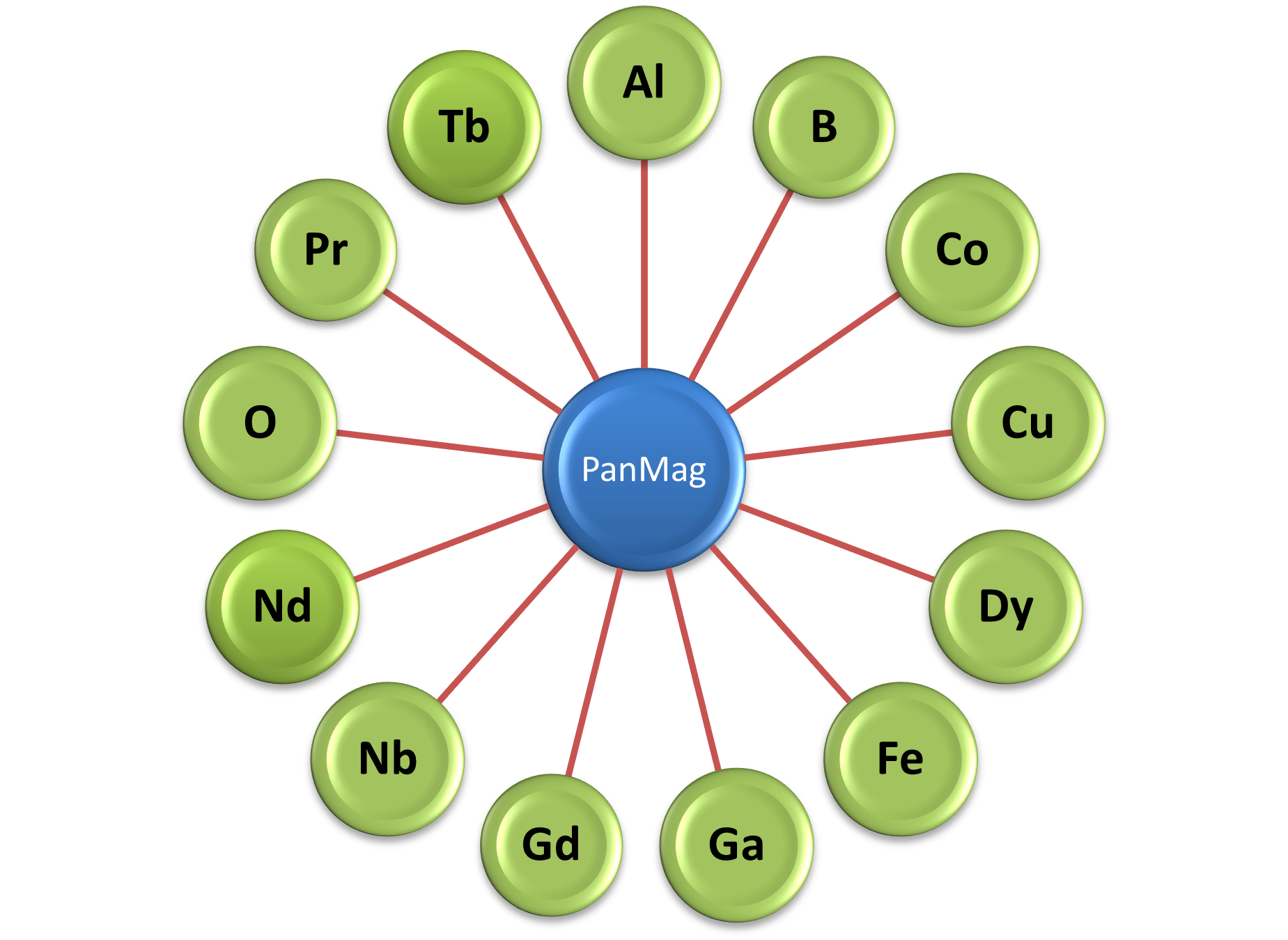PanMag
Database for Permanent Magnetic Alloys
- thermodynamic
PanMag
PanMag Quick Overview

-
Number of components: 13
-
Number of phases: 141
-
Elements: Al, B, Co, Cu, Dy, Fe, Ga, Gd, Nb, Nd, O, Pr, Tb
PanMag – newly developed thermodynamic database for exploring rare-earth permanent magnetic materials.
- The stabilities and properties of the magnetic phase (Nd2Fe14B based T1 phase) are carefully assessed. It can be used to predict the phase equilibria, solidification, and magnetic properties, such as Curie temperature, saturation magnetization (Bs) and magnetocrystalline anisotropy field (HA) of the magnetic materials.
- A total of 141 phases are included in the current database.
- A total of 57 binaries and 28 constituent ternaries have been critically assessed.
Applications

Calculated heat capacity of the T1-Nd2Fe14B phase with experimental data
The most important T1-RE2M14B phase is described using a 3-sublattice model: (Dy,Nd,Pr,Tb)0.11764(Al,Co,Fe)0.82354B0.05882 in this thermodynamic database, where RE represents rare earth elements: Dy, Nd, Pr, and Tb. M represents metal elements: Al, Co, and Fe. This figure shows the calculated heat capacity of the T1-Nd2Fe14B phase which is in good agreement with the experimental data. The heat capacity peak at Curie temperature is properly simulated.
This figure shows the calculated Curie temperature of the T1-Nd2(CoxFe1-x)14B as a function of Co composition in the second sublattice, which accords to the experimental data very well. A clear trend is shown that replacing Fe with Co results in the increase of Curie temperature for the T1 phase.

Comparison between the calculated and experimentally measured Curie temperatures for T1-Nd2(CoxFe1-x)14B alloy

